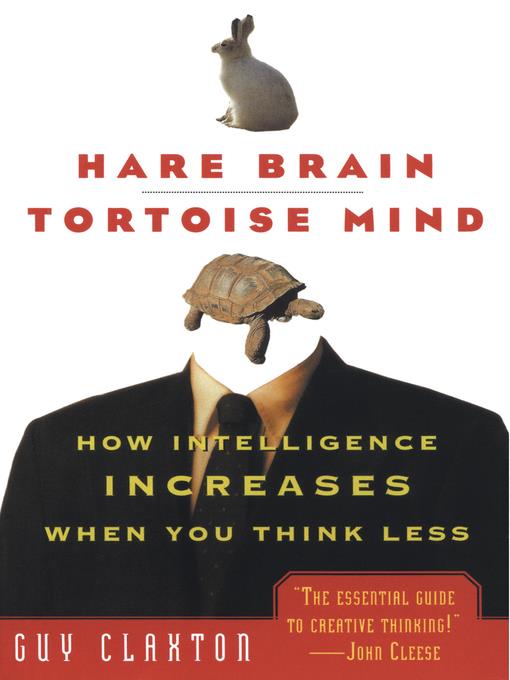
Hare Brain, Tortoise Mind
How Intelligence Increases When You Think Less
کتاب های مرتبط
- اطلاعات
- نقد و بررسی
- دیدگاه کاربران
نقد و بررسی

January 4, 1999
In a counterintuitive, often provocative assault on our everyday view of how our minds work, Claxton labels rational, ordinary, purposeful thinking the "d-mode" (deliberation mode or default mode). Modern Western culture, he maintains, overvalues the practical, conscious cogitation of the d-mode, which is diagnostic rather than playful, analytical and impatient instead of intuitive and relaxed. An Oxford-educated psychologist and visiting professor at Bristol University in England, Claxton draws heavily on recent research in cognitive science and studies of the human brain to argue that an "undermind" or intelligent unconscious works quietly below--and in some cases ahead of--conscious apprehension, helping us to register events, recognize patterns, make connections and be creative. A former pupil of Buddhist teachers Sogyal Rinpoche and Thich Nhat Hanh, Claxton uses descriptions of the creative process by Einstein, Mozart, Wordsworth, Ted Hughes, Henry Moore and many others to support his theory of the undermind. He includes deceptively simple puzzles and exercises, as well as anecdotes drawn from daily life, to bolster his thesis that we need to adopt slower, more meditative modes of knowing. While Claxton speaks the language of cognitive science, his ideas resonate with Freud's description of the unconscious, Buddhist concepts of the divine ground of existence and the great Romantic poets' notions of the fount of creativity.

























دیدگاه کاربران